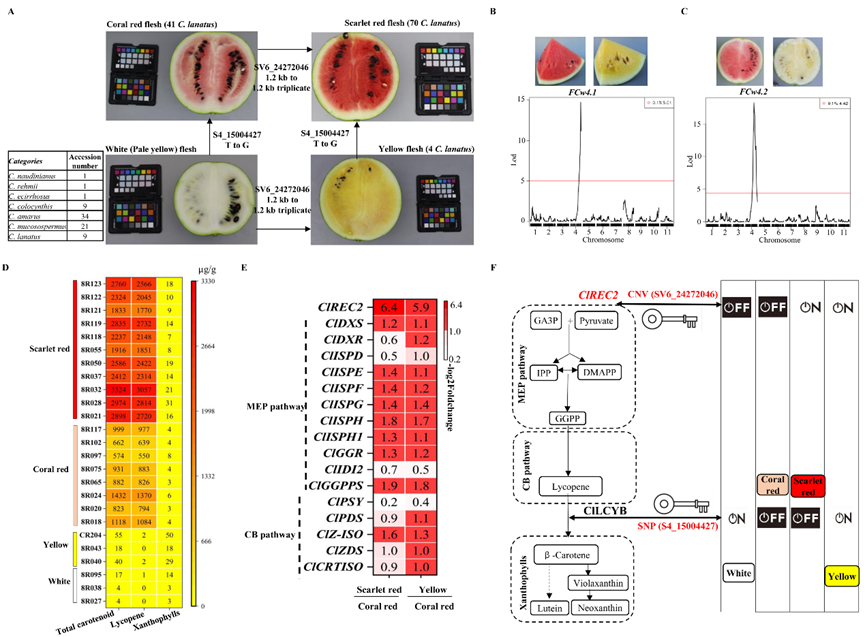Recently, the team for the Watermelon and Melon Resources from Zhengzhou Fruit Research Institute of CAAS revealed that a “two-switch” genetic model by integrating two major causative loci, which can explain the formation of the four main flesh colors in different watermelon accessions. These results provide new insights into the regulation of carotenoid biosynthesis and color formation in plants. The related research findings were published in “Molecular Horticulture”.
Watermelon fruit flesh displays various colors. Although genetic loci underlying these variations are identified, the molecular mechanism remains elusive. The research team assembled a chromosome-scale reference genome of an elite watermelon and developed integrated genetic maps using single nucleotide polymorphism and structural variation markers. Through systematic integration of dual genetic loci, they confirmed the molecular mechanism underlying watermelon flesh color differentiation. Four phenotypically distinct flesh colors in various watermelon accessions arise through coordinated action of two regulators: Lycopene β-Cyclase (ClLCYB) determines which type of carotenoid (yellow vs. red), while REDUCED CHLOROPLAST COVERAGE 2 (ClREC2) modulates the level of red carotenoid (coral red vs. scarlet red). The new insights offer valuable guidance and advance our understanding of carotenoid biosynthesis and accumulation in plants.
This research received support from national projects such as the National Key R&D Program and the Agricultural Science and Technology Innovation Program.
Linkage:https://molhort.biomedcentral.com/articles/10.1186/s43897-025-00166-y
By Li Na
lina01@caas.cn

Two genetic variants together regulate the formation of four flesh colors of watermelon
